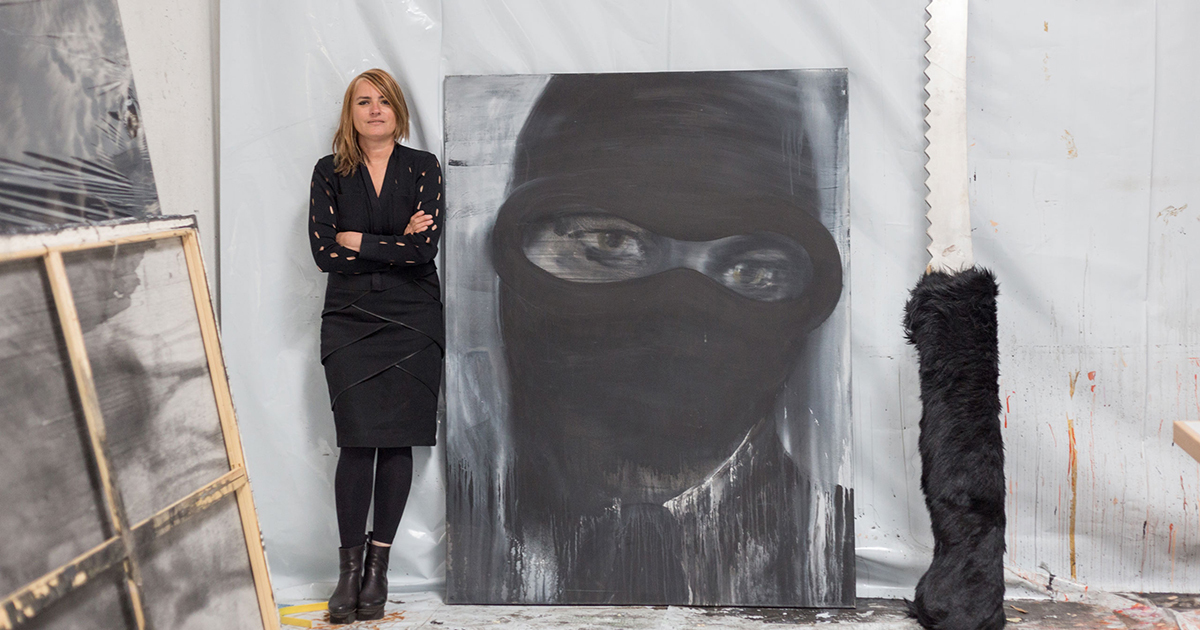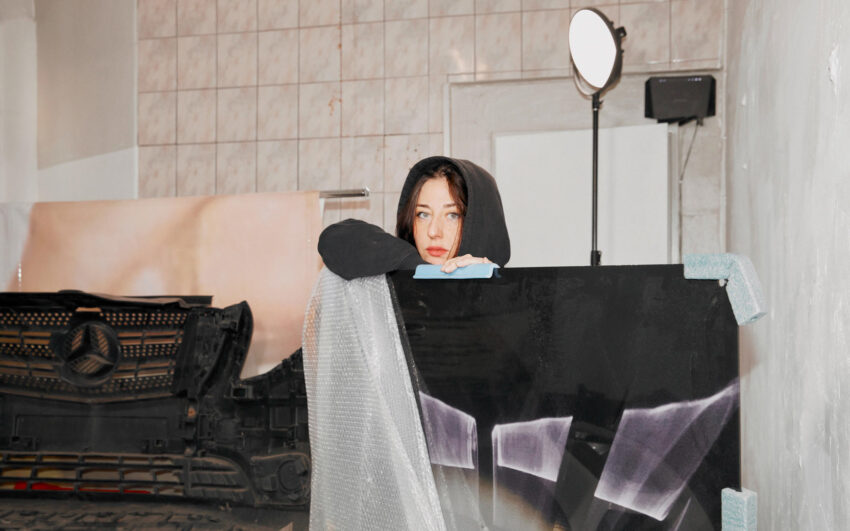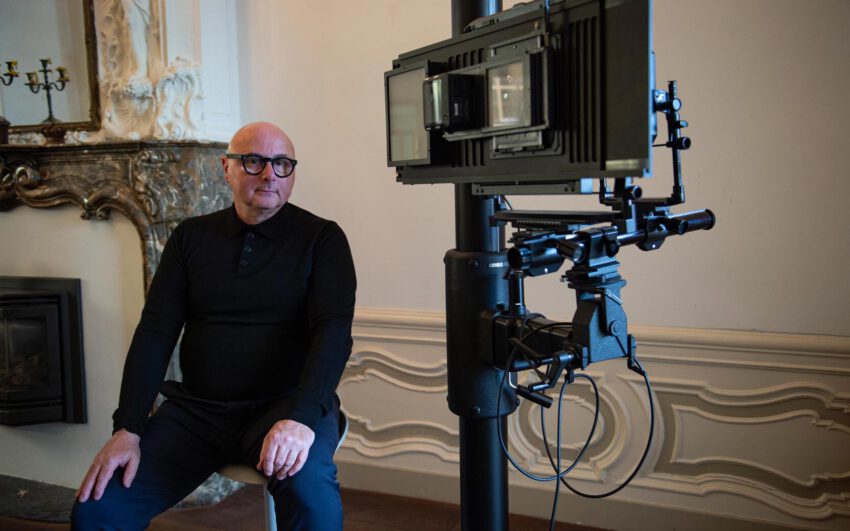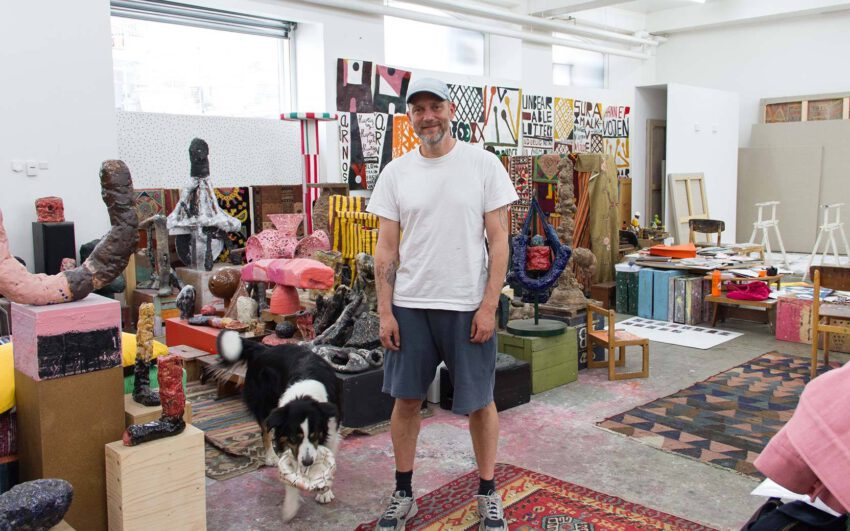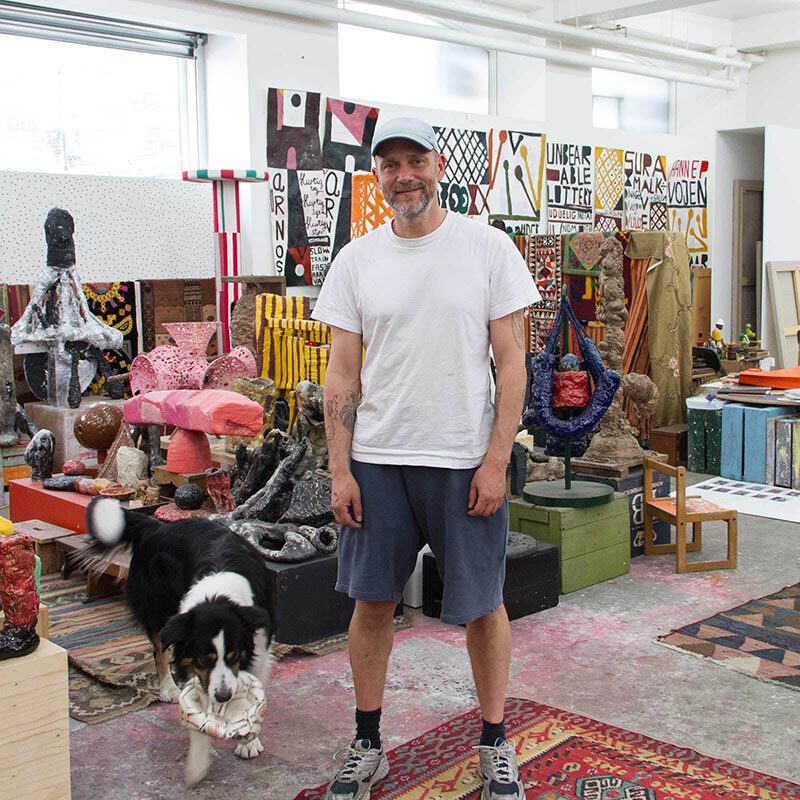Painting is not Julia Bornefeld’s only strength. The work of the artist, who divides her time between Bruneck and Berlin, moves between canvas and space, concreteness and abstraction, as well as between poetical introspection and concrete objectivity. Thus in the interview Bornefeld does not only speak about painting but also about welding, writing, and sewing.
Julia, can you remember your first contact with art?
I can still remember one truly life-changing experience: I grew up partly in Innsbruck, but mostly in Kiel in Northern Germany. The permanent exhibition of the Museum für Kunst und Kulturgeschichte Schloss Gottorf in Schleswig presented the preserved body of a young person, that had been found by peat cutters in a bog near Windeby. As a ten year old, this mummified corpse confronted me in a profound manner with the reality of mortality and formed within me a connection with Viking culture. For nights I was torn between fear and fascination. In Tyrol the numerous crosses and representations of Christ impressed me. At age nineteen, I saw work by Beuys at the Hamburger Kunsthalle that left a deep impression on me. Death, representations of death in art, sacred, pagan, and Christian imagery dealing with death, and the finiteness of life have characterized my work and me for thirty years.
Did your surroundings influence your decision to study art?
I come from a combination of teacher and artist household – my grandfather was a conductor, a music director, and a pianist in Innsbruck and mother was also a musician. My biological father is a literary man and graphologist and as a libertarian has lived for decades on ships. This environment of music and culture as was influential. As a child I drew and painted constantly and at age sixteen I learned welding. Some of my school friends studied art, architecture, and theater or pursued other artistic careers.
You have studios in both Bruneck and Berlin. How do you divide your time between these two locations?
For decades I have been commuting between Northern Germany and South Tyrol and numerous exhibitions in Germany, Austria, Switzerland, and Italy have come about as a result. My two children have grown up partly in Germany and partly in the mountains of South Tyrol where I have found good work conditions. The fabric factory Moessmer in Bruneck has provided a 600 square meters studio for me and two other women that we occupy as artists in residence. In Berlin I have a loft-like space where I edit texts, design and plan exhibitions along with art in architecture projects, conceptualize works and meet with people from the cultural scene.
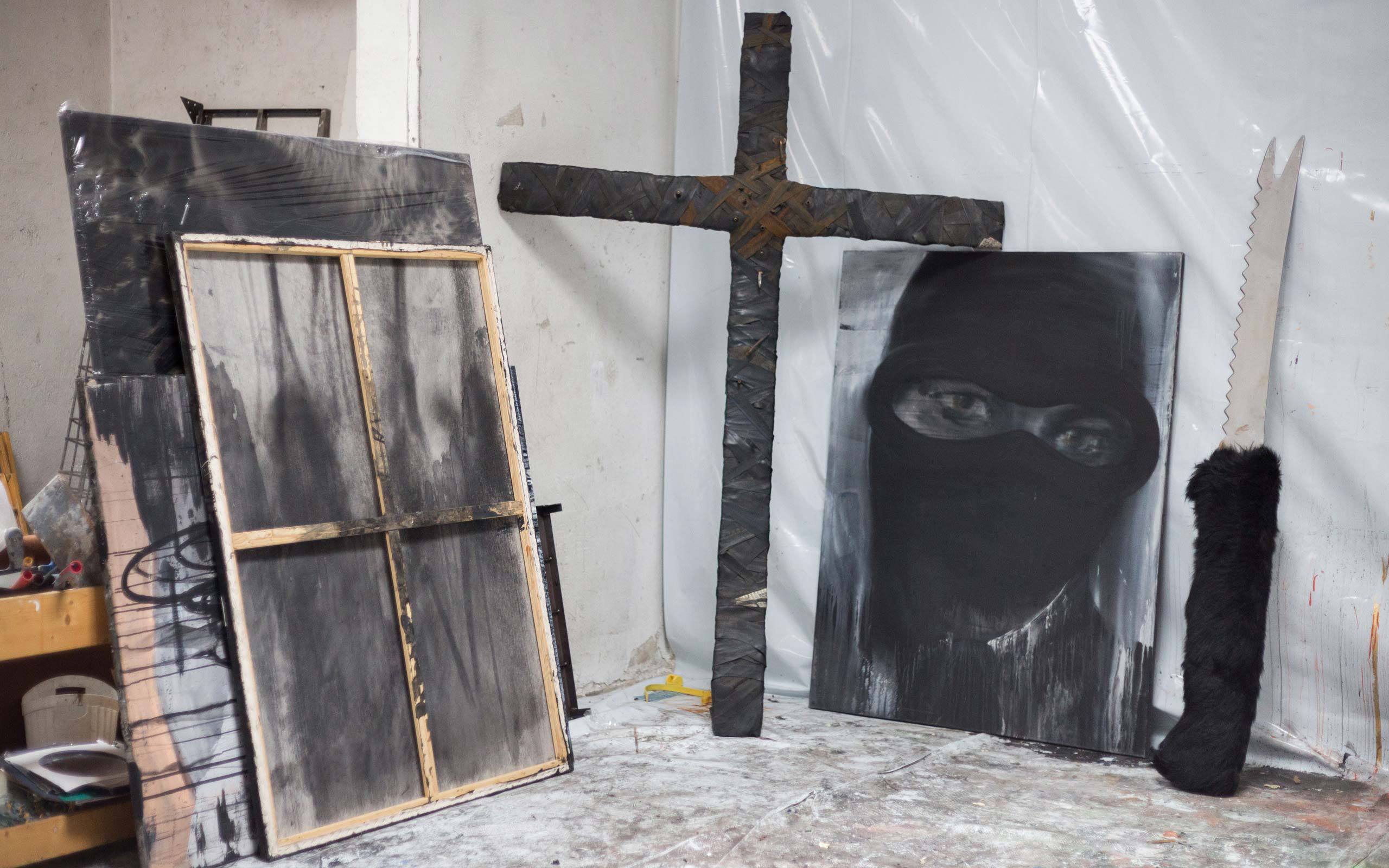
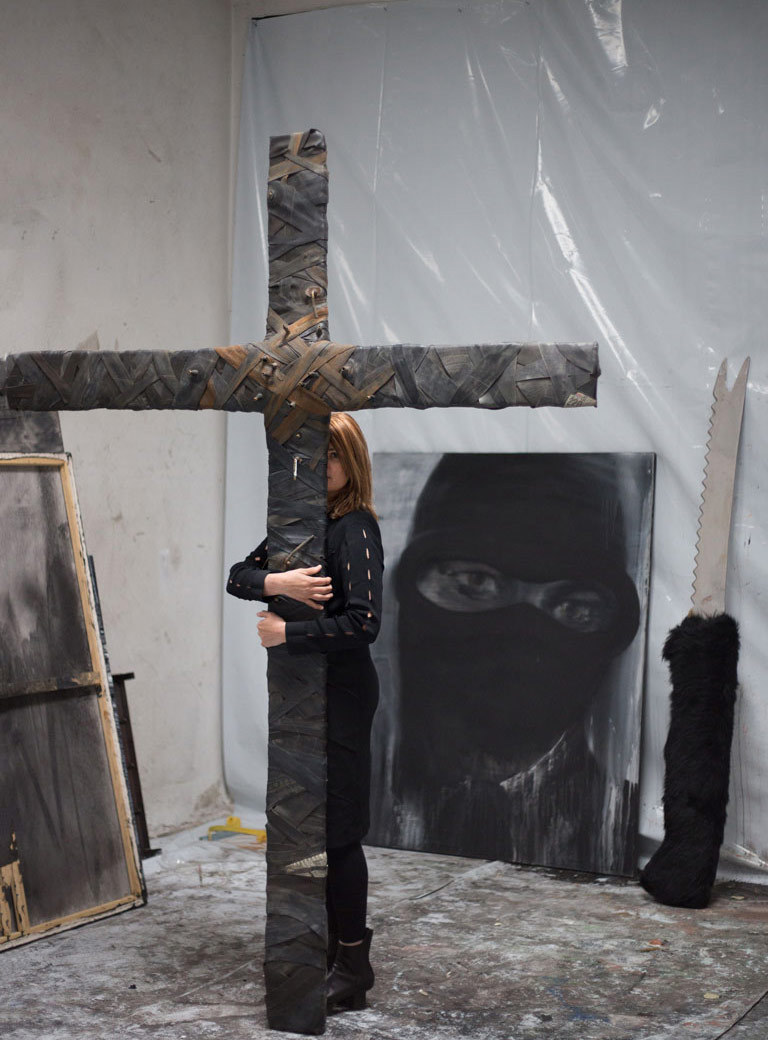
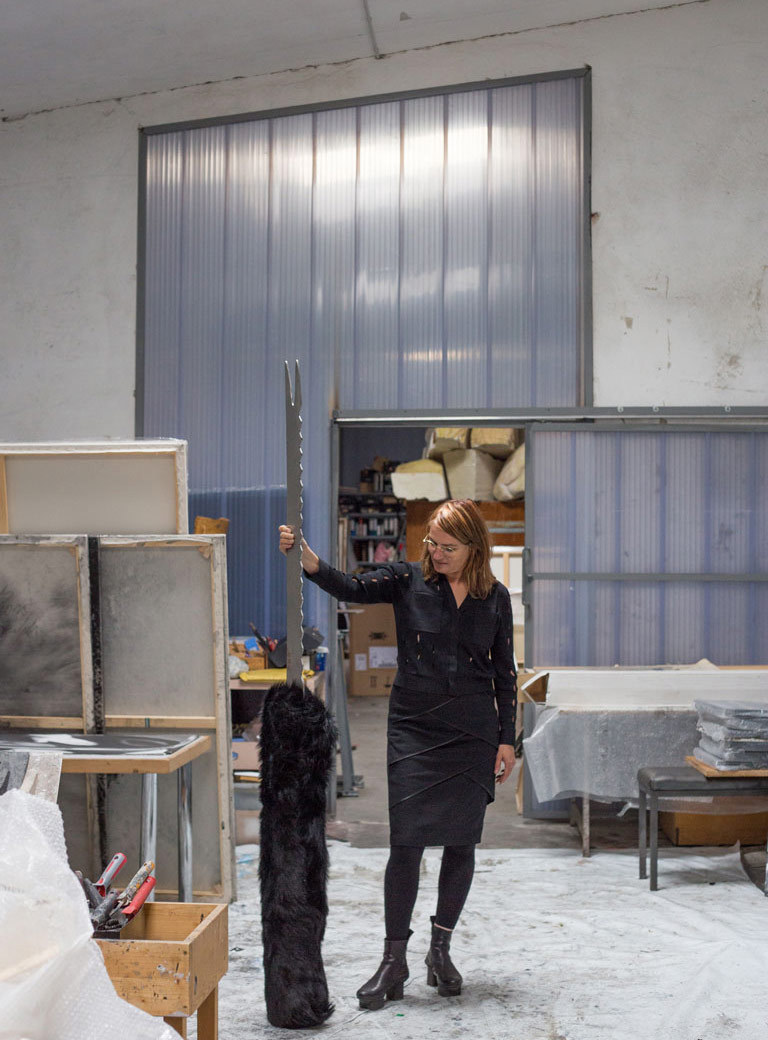
Are there any points of contact between your work and the work of the fabric factory, in which your Bruneck studio is located?
An active fabric factory is an unusual yet at the same time very inspiring work environment. Frequently I produce works using products/ from the factory. For ten years we three artists have produced art projects in the public space under the group name “Artists by Moessmer”.
Let’s go from your work environment to your work. How would you explain to someone who has never heard about you or your art what your work is about?
Originally, I studied painting, but in time my works became increasingly more space consuming. In the meantime, there were also photographic and video works, which are partly integrated in the objects and installations. In my work processes, I address psychological topics using partly performative, partly ritualistic approaches, and I also pursue feministic and socio-critical issues. I arrange my exhibitions so that the works become staged scenes appearing like set pieces from a drama. Often I become more interested in the exhibition space and change the style or technique. My kinetic objects may be equipped with light and sound, perhaps a composition that is developed and performed by specially invited musicians.
You mentioned that you use diverse media in your works. Do these media have their own functions for you?
There is painting. Painting does not lie. A “good painting” simply is a “good painting”. And I can’t even say when and whether I shall paint a “good painting”. A painting surprises the painter, one cannot plan it, it evolves. My objects on the other hand adapt their forms and dimensions often relation to the respective exhibition space. The choice of media may occur quite spontaneously, how this plays out is important to me. Sometimes there are performative steps between one and the other as in the case of the body-related work series. I slip in the sewn objects and these become a second skin. I portray these skins in movement via photographic sequences.
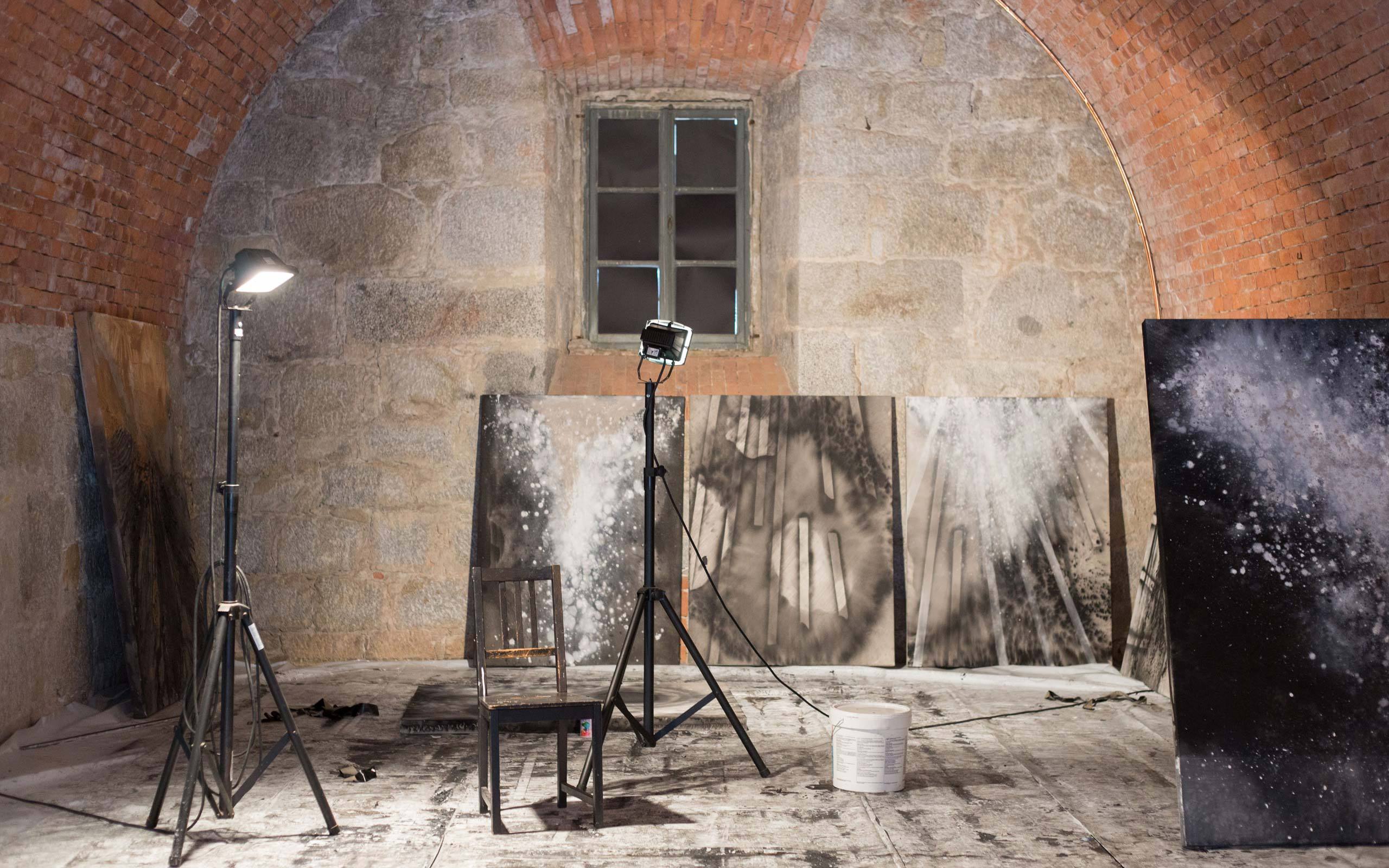
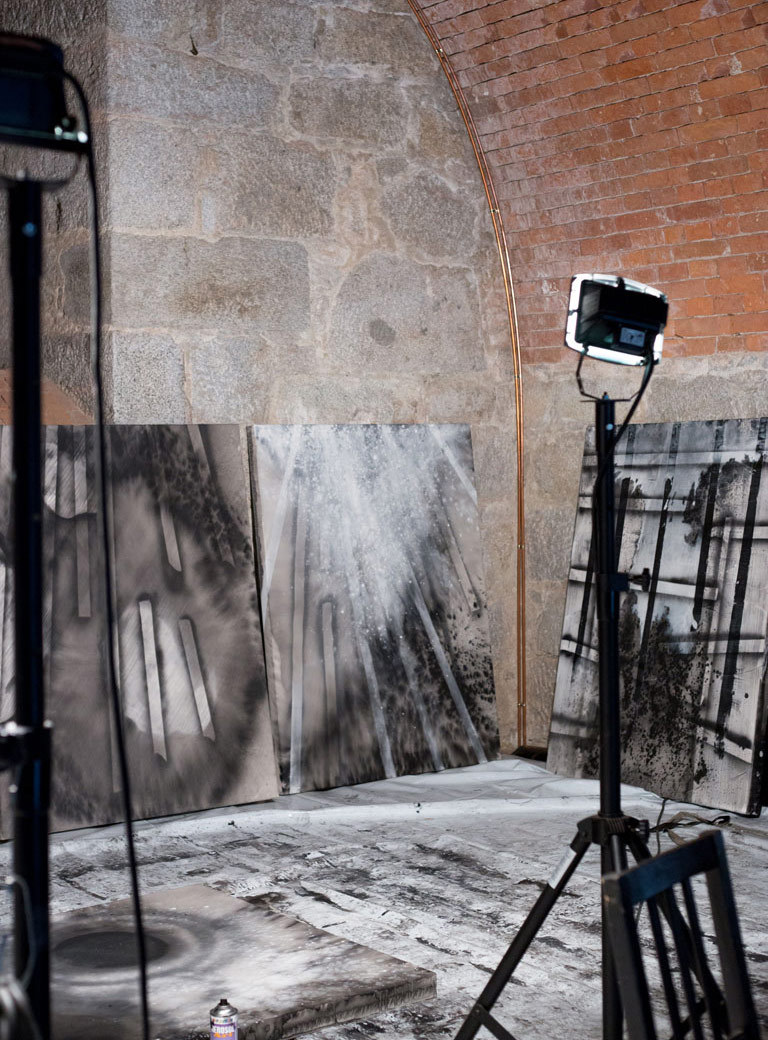
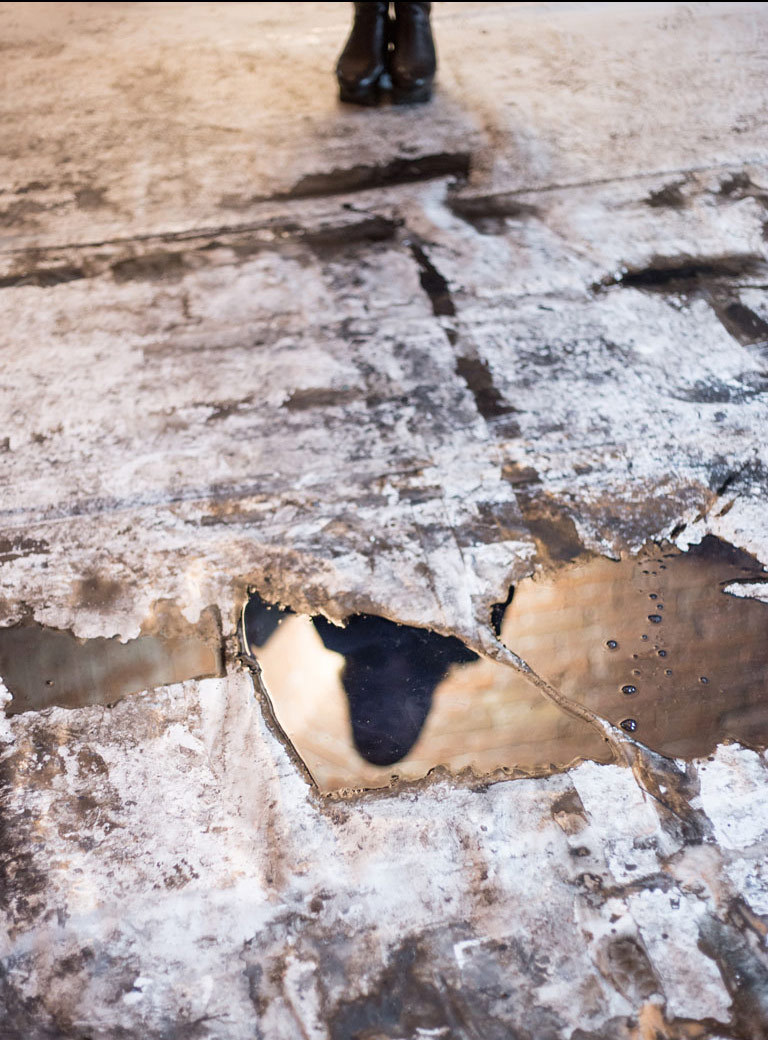
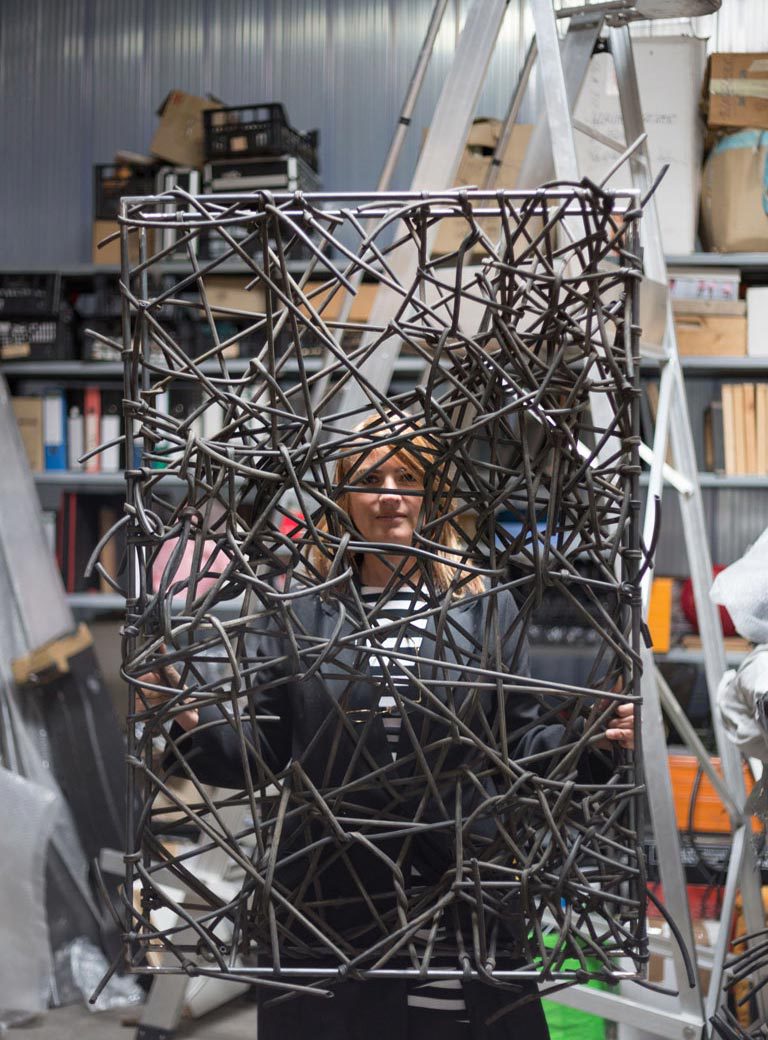
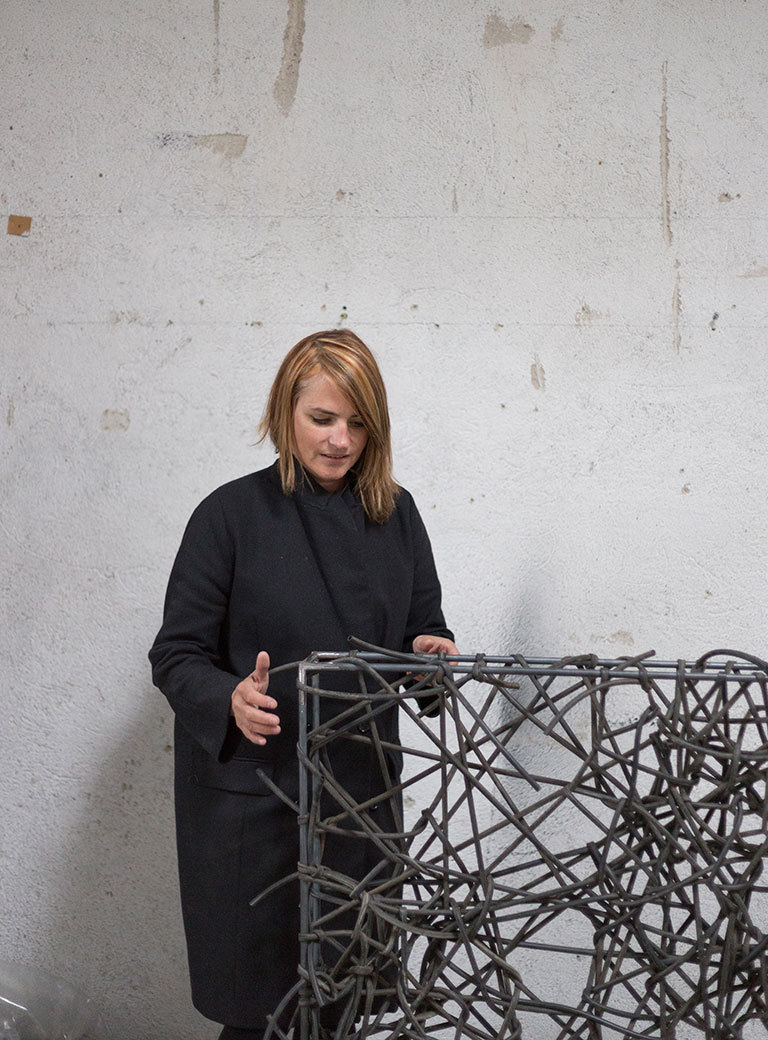
In your sculptures you often use the enlargement or distortion of familiar objects. What do you intend to express by these transformations?
Do you recall that as a child, things seemed much larger than they do now from an adult perspective? When one observes something that evokes an intense emotional response one’s perception of both the thing and its location may become blurred and its dimension increased. In other words, our perception of an object, a space, or another person, may change significantly by means of a combination of psychophysical response and memory. The personal perception of a situation is much more directly described in the form of film and literature than in an object.
What is the relationship between painting and physical objects in your work?
For me painting and drawing are the most immediate means of expression. Through painting I get to self-reflection. The act of painting over hours and days is a highly concentrated activity. As a student I constructed objects from unfinished canvases. I disassembled the canvases encompassed and pressed things into them, tore and rended them – in this way my plastic works gradually began to develop.
At the beginning of the interview, you mentioned that representations of life and death in both sacred and secular imagery have fascinated you from childhood. How does this translate into your work?
I see the artist as a border crosser. While I am working – especially when I am painting – I experience immersion and the access to the past or to the future. In part I have the feeling that I process the history of my forefathers in my works. Upon the loss of close relatives, I began working with fire and smoke rituals. In many cultures such rites accompany the transition from life to death. Through the use of the element of fire a relationship to the supernatural is established. The performative staging of the fire ritual locates its antecedent/precursor in the work, the painting, or photograph. This has resulted in works like The Burning Supper and Mama.
You frequently write texts to accompany your works. What role does writing play in your work, and what aspects of your art do you intend it to enhance?
When I was younger I already had an appreciation for such writings as The Practice of Art against Aesthetic Reality by Antoni Tapies. All of the works of the literary and cultural critic Elisabeth Bornfenld can be found in my book collection. It is inspiring to follow the work and work processes of other artists and academics. This is the sense in which I wish to describe my own inner drive or to speak about my work processes. The description of exhibition concepts, invitations to discussion circles and interviews challenges the medium of language.
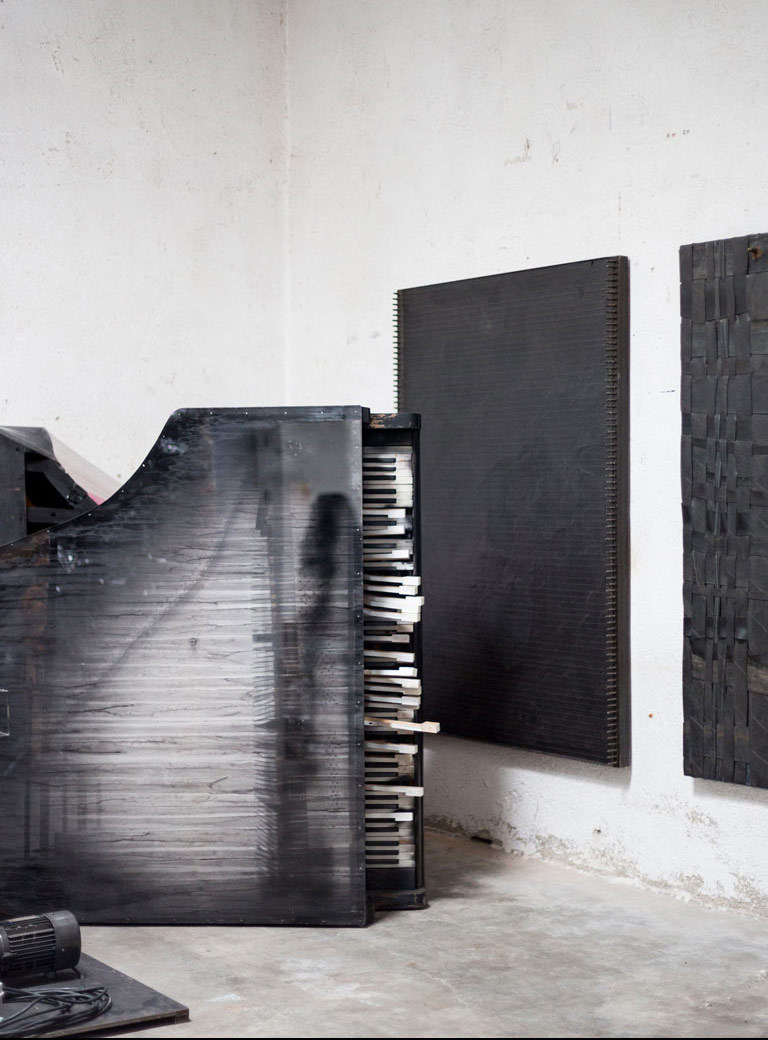
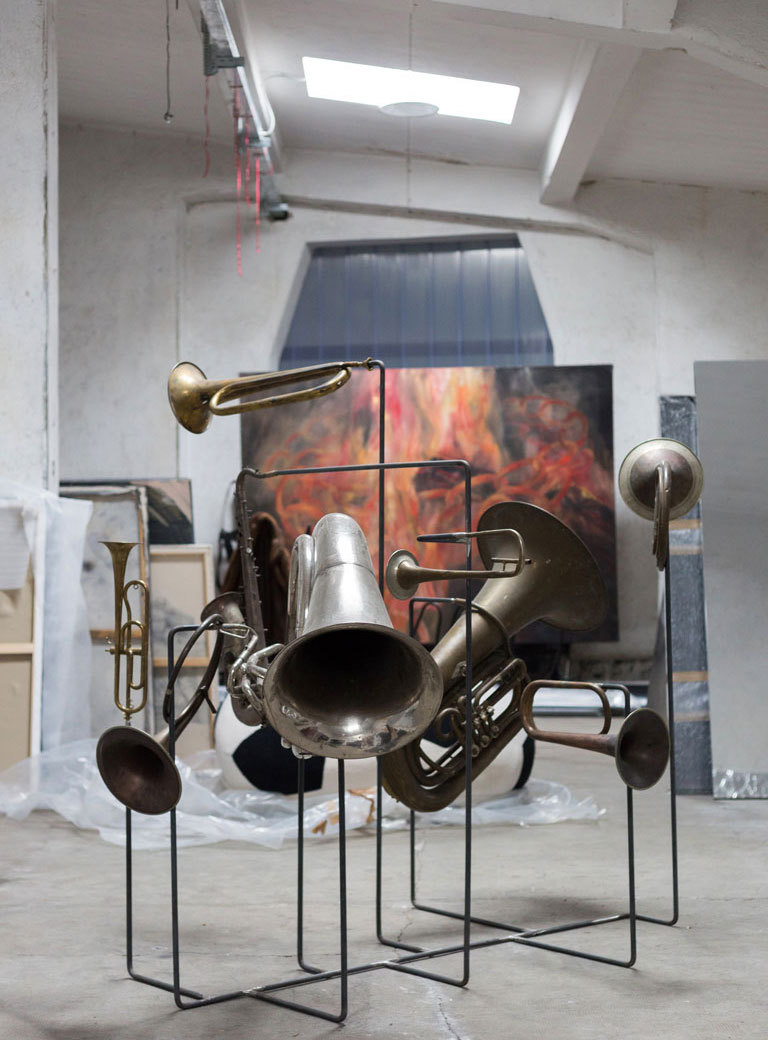
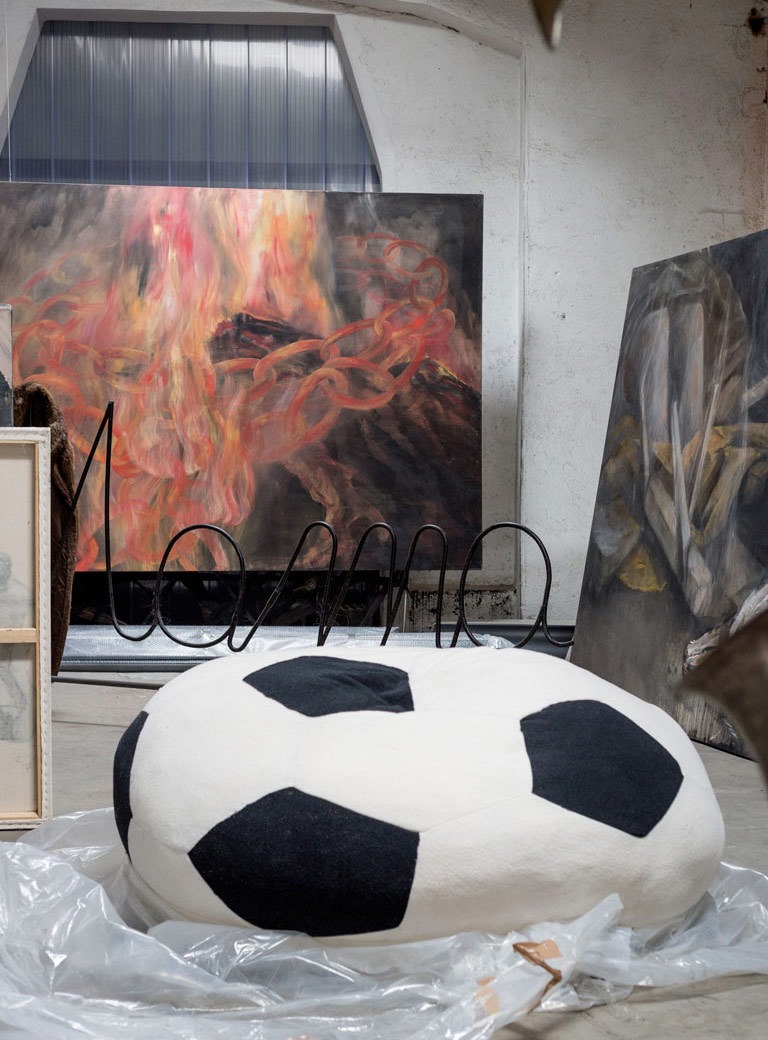
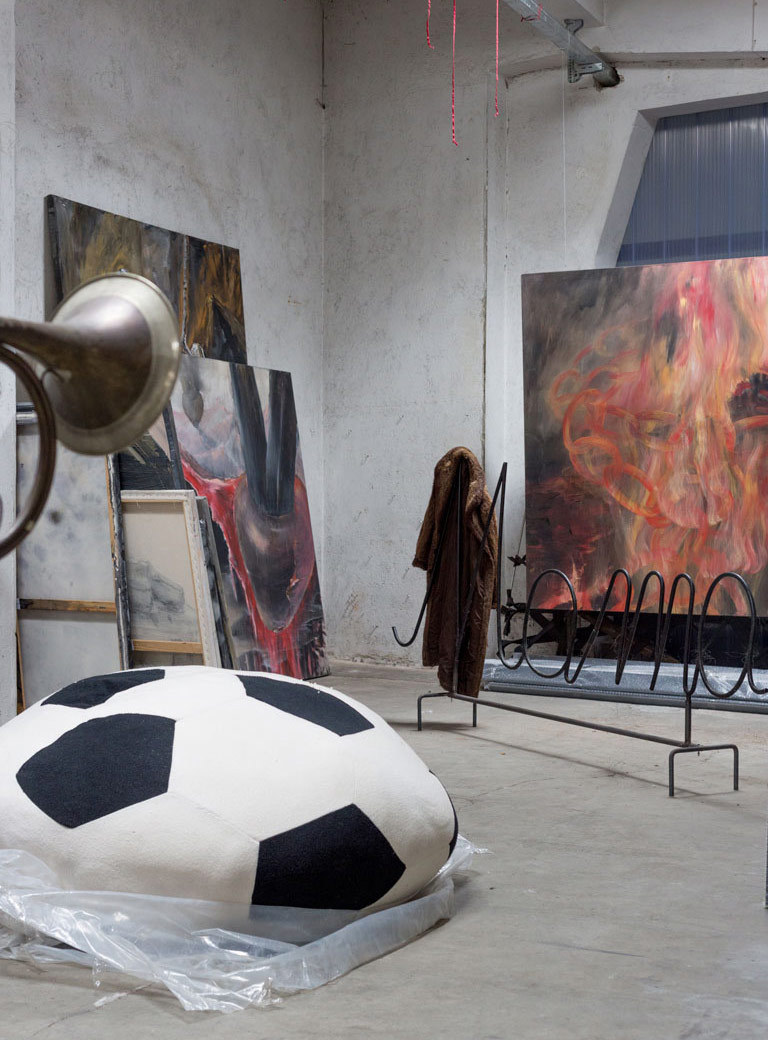
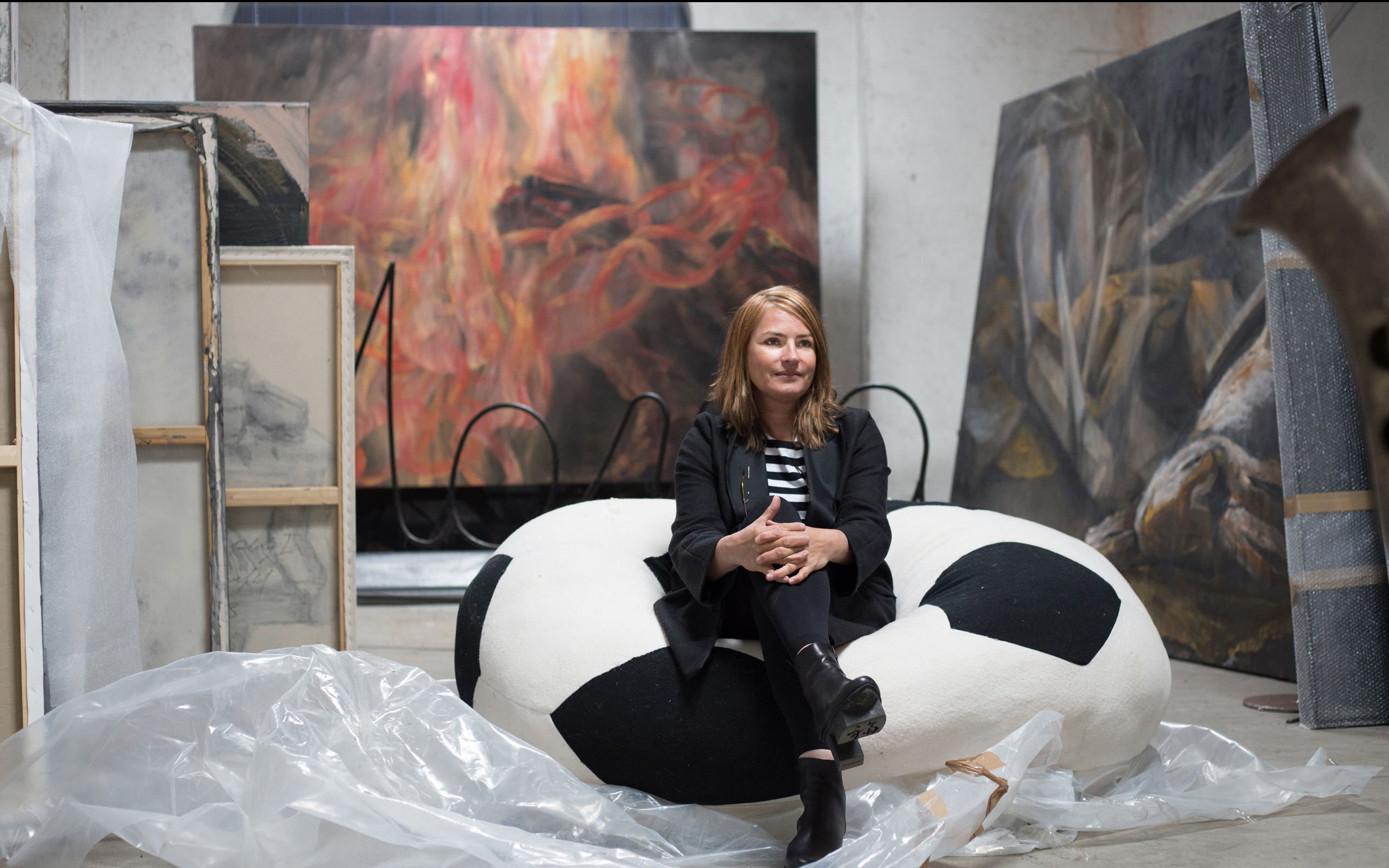
In addition to Antoni Tapies, can you name other people who have influenced you and your work, and perhaps still do?
When I was sixteen I saw drawings by Arnulf Rainer at Galerie Elisabeth and Klaus Thoman in Innsbruck that had an impact on me. In my early twenties Beuys and especially Antoni Tapies, but also Emil Schumacher, Alberto Burrin, and Emilio Vedova, with whom I studied and was strongly influenced by. Coming from Northern Germany I have followed with interest the work of Jonathan Meese, Daniel Richter, and John Bock. To me, Anish Kapoor is one of the most spiritual artists. In addition such artists like Louise Bourgeois, Maria Lassnig, Pipilotti Rist, Marina Abramovic, Mona Hatoum, and the writer Elfriede Jelinek have also had an influence on me.
What are you presently involved in?
At the moment I am working on an abstract work cycle with the title Morphic Fields, which is still in a developmental phase. Through the informal application of black ink on canvas I create pictures that appear as insights into the universe or perhaps photographs taken from a great distance from the surface of the earth and which “bloom” in a strange and somber manner. It is a painting technique that constantly surprises me. The content of this cycle is concerned with theory relating to Morphogenetic Fields that may be said to have the capacity for memory imposing patterns on otherwise random or indeterminate patterns of activity. Through my informal use of painting there emerge “resonance patterns”. As a counterbalance to this quite abstract approach, I sometimes undertake quite representational works, for example the fire pictures that tend toward the direction of old master paintings.
Can you give us a preview of where your art can be seen in the near future?
Presently I’m working on a large exhibition for the Landesmuseum Franzensfeste in the South Tyrol. I will exhibit together with the artist Michael Fliri in the former gunpowder storage and weapons arsenal in the fortifications built between 1833 and 1838 under Emperor Franz I. At the beginning of the year, I had my studio in this fortification for four months. The title of the exhibition is Grenzgänge [Border Crossing] and the dimension of the fortification shows me my borders (laughs). Recently the Alperia Tower, the 40-meter-high water reservoir of the city of Bozen, was engaged in cooperation with the architect Valentina Bonato and the architectural team, Studio Museum39. The tower is like a light installation and reflects the heating and cooling process of the water. I’m also working on the realization of various art-in-architecture projects in Germany and Italy.
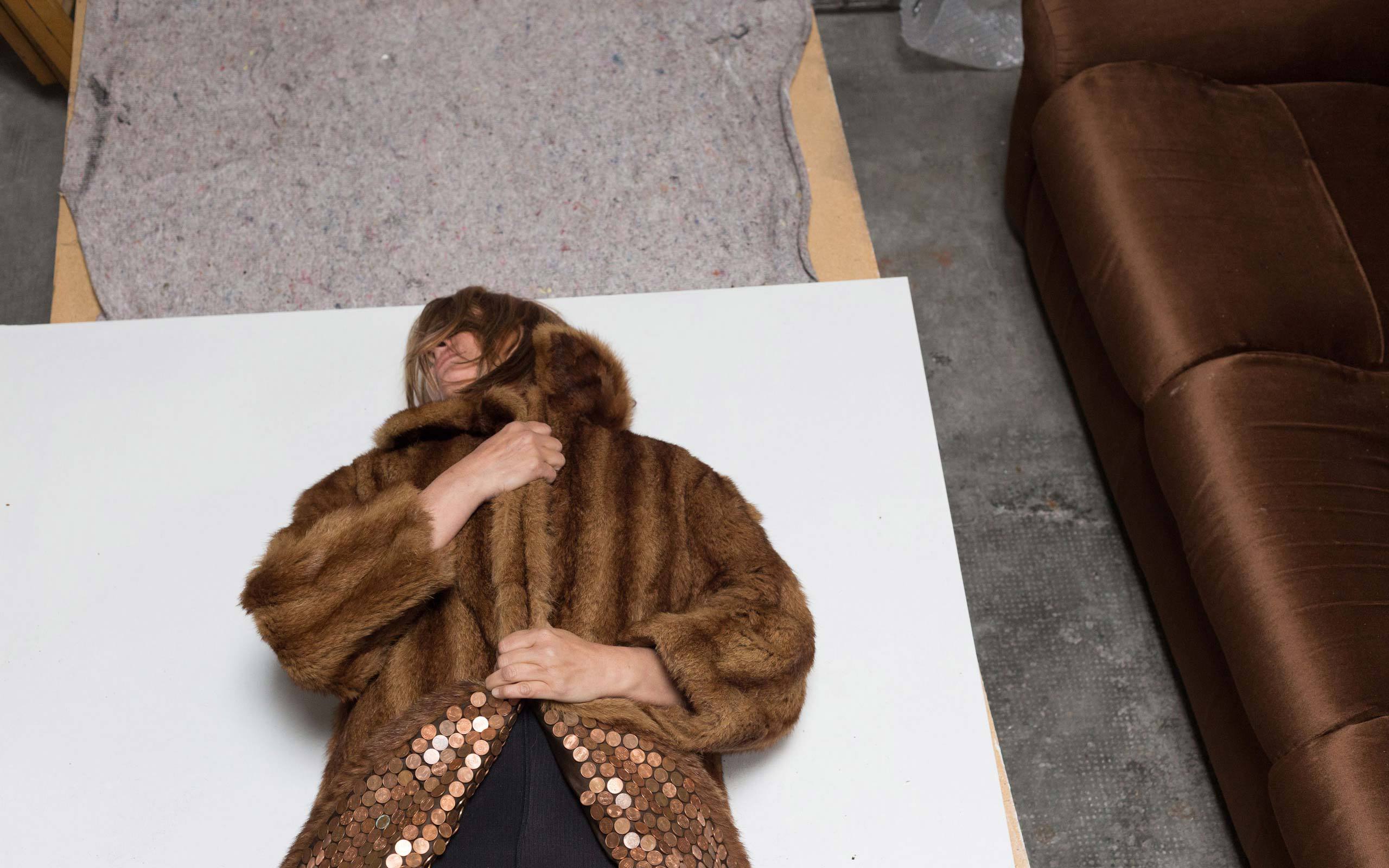
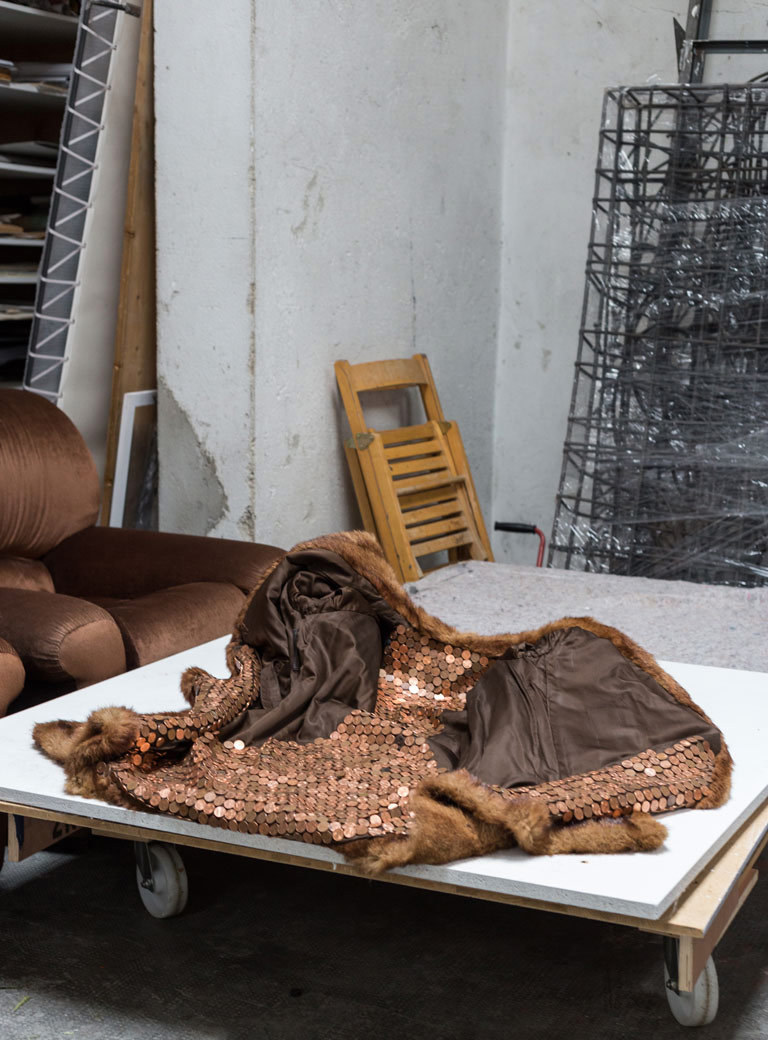
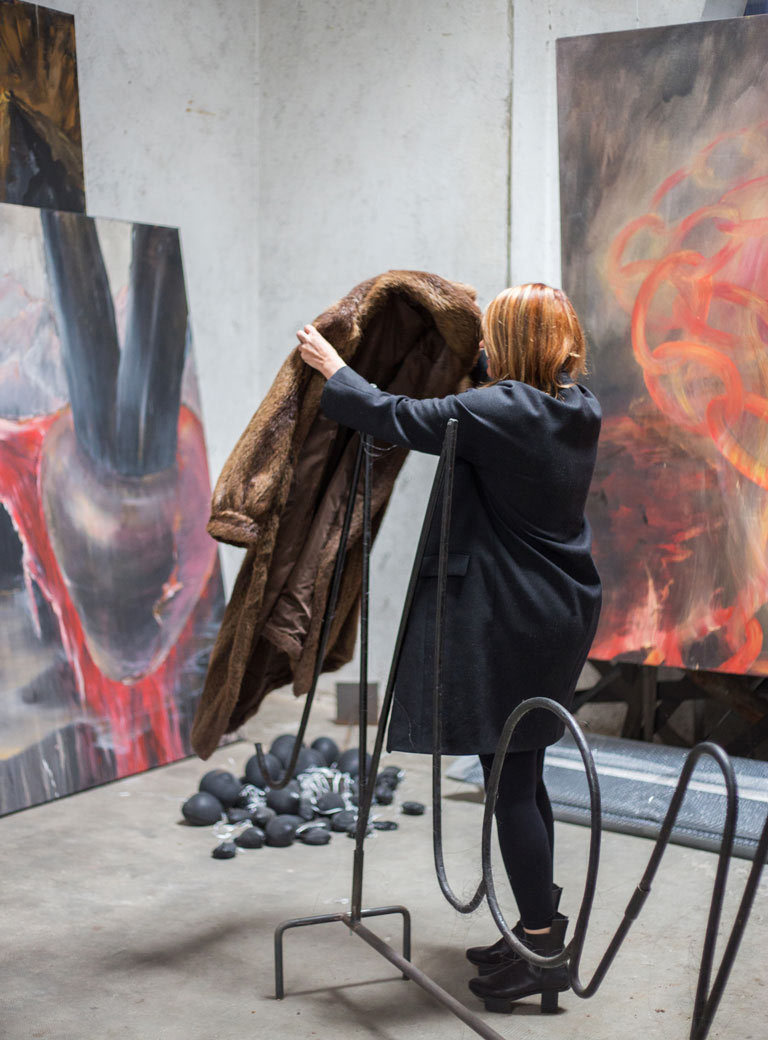

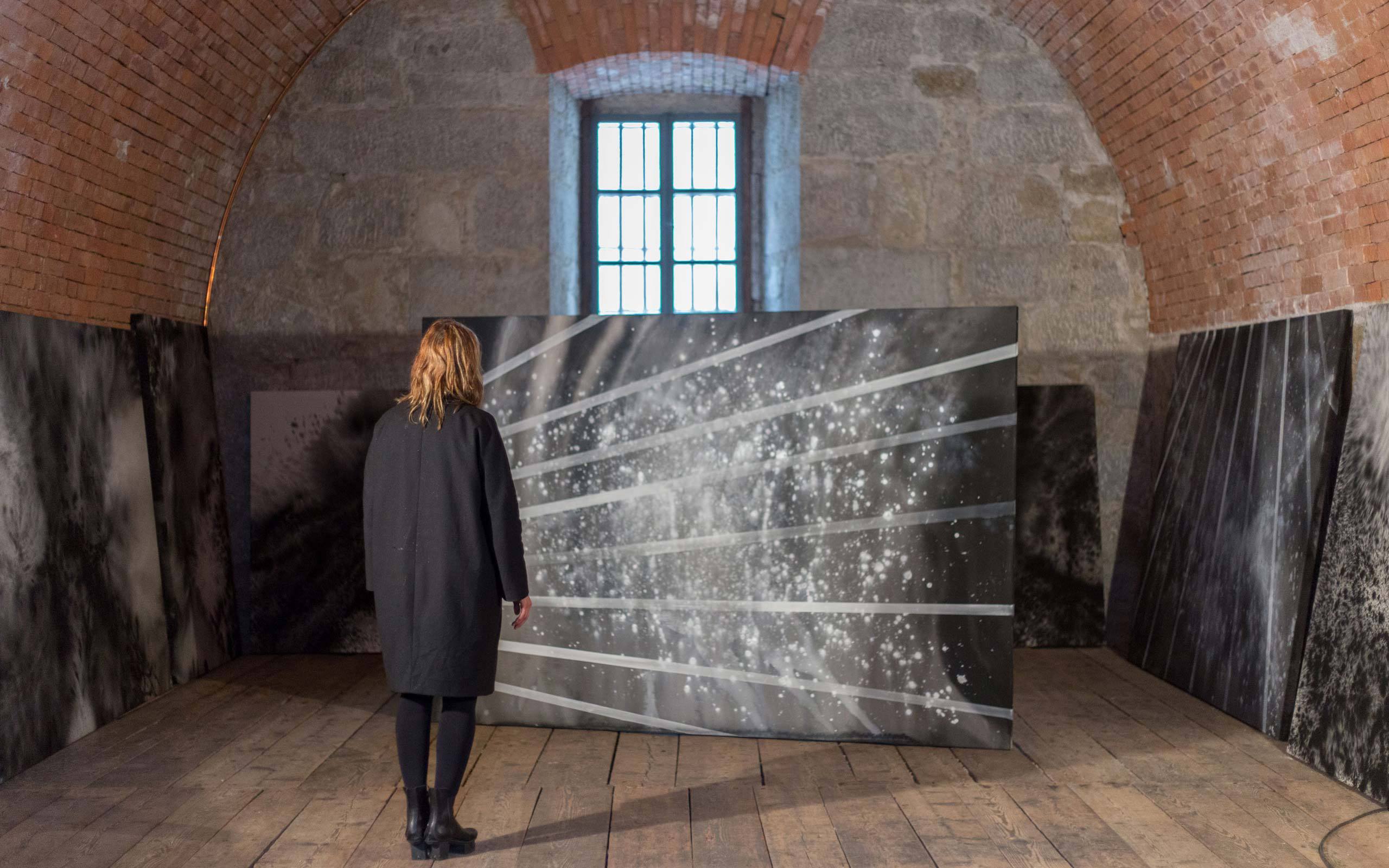
Interview: Gabriel Roland
Photos: Jasmine Deporta
Links: Julia Bornefeld's websiteGalerie Elisabeth & Klaus Thoman


